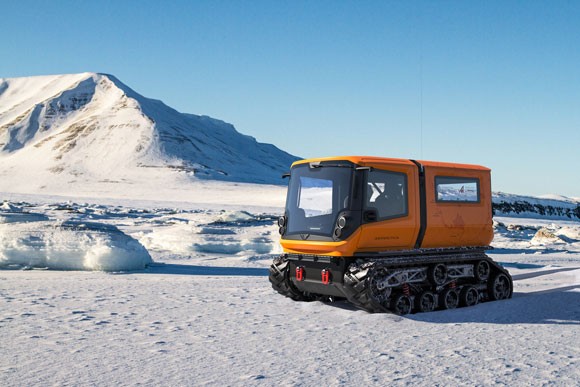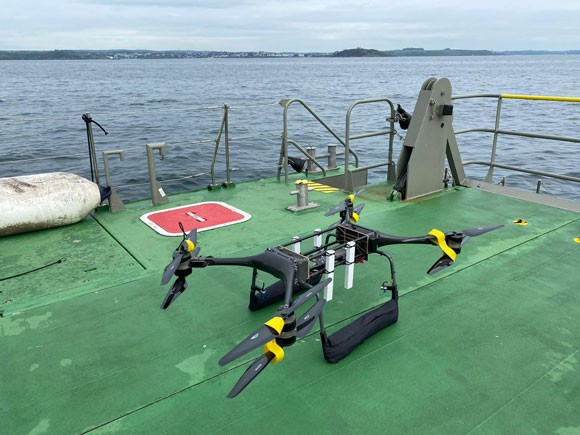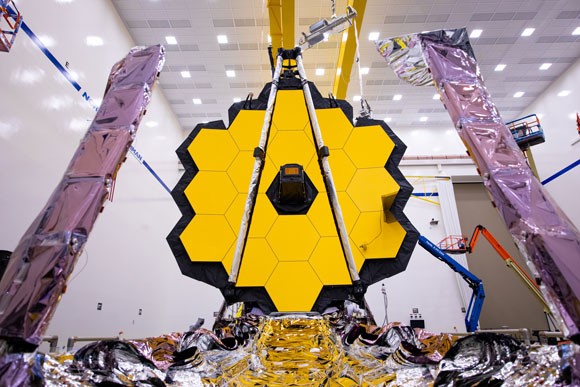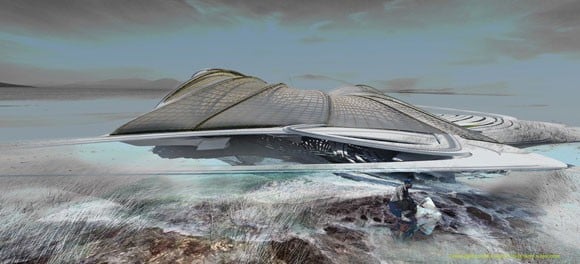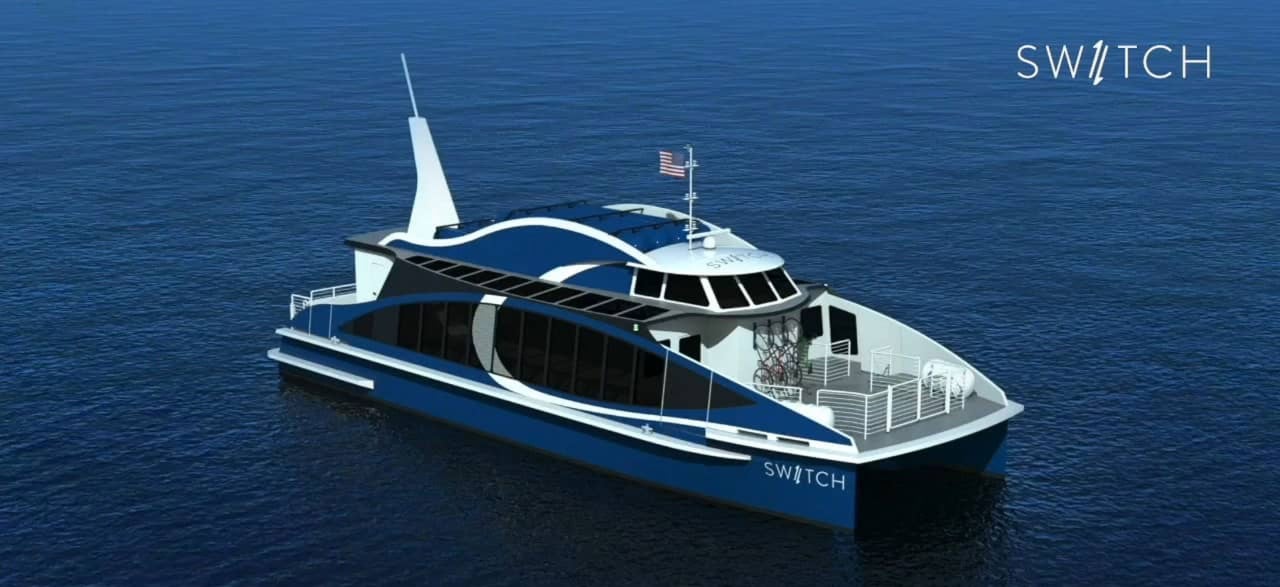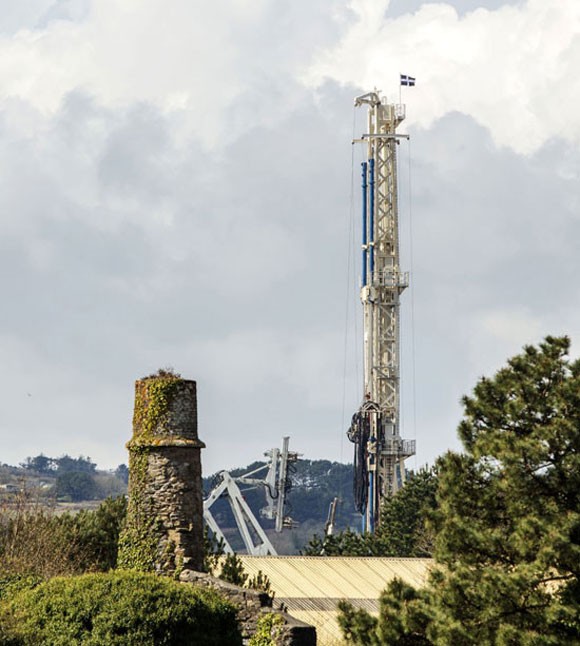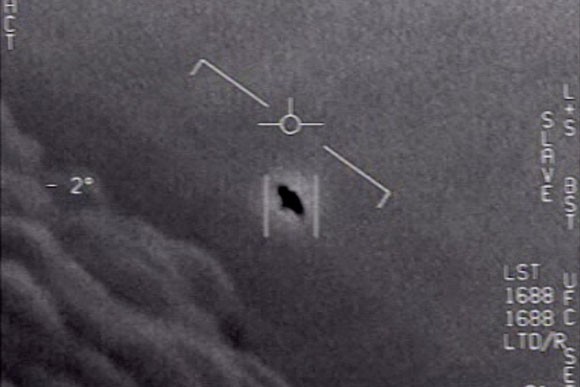These transport, energy and technology innovations – some far-sighted, others just pipe dreams – have popped up on the MS Amlin radar.
China rules the waves
China’s fast-expanding navy is now the world’s largest, according to a recent Pentagon report. As of 2020, its fleet numbered 350 warships compared to the United States’ 293. No surprise, then, that satellite images suggest China is building a third aircraft carrier. Known as Type 003, it will be the country’s first-ever CATOBAR (catapult-assisted takeoff but arrested recovery) carrier, capable of efficiently launching heavy aircraft at speed.
The secretive vessel, which appears to have been under construction at Jiangnan Shipyard in Shanghai since at least late 2018, is even larger than its predecessors – the Type 001 Liaoning and Type 002 Shandong. Early assessments put the Type 003 at approximately 315 metres long and 74 metres wide. It is also believed to boast a high-tech electromagnetic aircraft launch system (EMALS), rather than the ski-jump ramps used on the Liaoning and Shandong. EMALS is the modern version of the steam catapult and has the advantage that it does not require a large supply of fresh water.
Type 003 Aircraft Carrier
(Image source: Wikipedia)
First zero-emissions polar exploration vehicle
Venturi, a Monaco-based manufacturer of electric vehicles, has unveiled the first ever zero-emissions polar exploration vehicle, made using parts from the company’s Formula E racing car. The eco-friendly Venturi Antarctica can carry up to six people, plus equipment and a second battery, which can extend the first battery’s range of 30 miles (50 kms).
The vehicle will first be put through its paces in the French Alps, before being shipped in December 2021 to Princess Elisabeth Antarctica, a Belgian polar research station in Queen Maud Land, in East Antarctica. The Belgians claim this structure is the continent’s first zero-emission research station.
“With the Venturi Antarctica, scientists are getting an efficient, easy-to-handle vehicle with very good performance,” said Gildo Pastor, president of Venturi. “They will be able to carry out their research in optimum conditions, without polluting sites where the quality of analyses needs to be accurate down to the last molecule.”
Royal Navy trials heavy-lift drones
The UK’s Royal Navy is testing a fleet of maritime rescue drones that might one day save the lives of sailors who fall overboard. Members of a team called NavyX recently tested heavy-lift Minerva T-150 drones on dummy sailors in the ocean off the coast of Portsmouth, in southern England. Once fully operational, the drones will drop life-saving supplies such as inflatable rafts, life buoys, survival suits, and food and drink. They will then hover above the stranded sailors, signposting them for rescue teams looking to evacuate them. In the final stage of the rescue, the drone would return to the deck of a ship or fast-moving lifeboat.
NASA’s golden mirror telescope set for launch
NASA is gearing up for the launch of a US$10billion space telescope that will replace the ageing Hubble Space Telescope.
The new James Webb Space Telescope features a 6.5-metre-wide gold-plated solar mirror composed of 18 hexagonal sections. The sections fold up like a piece of origami, meaning the telescope can fit inside a 5-metre rocket.
This technological marvel will be moved by ship from California to the European spaceport in French Guiana, via the Panama Canal, during the summer of 2021. NASA says it will be ready to launch no earlier than the end of October 2021.
The new telescope will eventually be used to find the first galaxies that formed during the early life of the universe and to “peer through dusty clouds to see stars forming planetary systems”.
Holiday on trash island?
A floating island resort will soon be constructed atop a pile of garbage off the coast of the Cocos (Keeling) Islands, a remote Australian archipelago in the Indian Ocean. Called the Recycled Ocean Plastic Resort, it is designed by London and Beijing-based architect Margot Krasojevic who plans to scavenge plastic waste material and pack it tightly inside bags. The end result will be an artificial island.
A spokesperson for the company explained: “These [bags] would be woven together to provide a heavily-anchored platform, fortified with mangrove tree roots that would wind around the mesh-filled support bags to provide stability and flood resistance, with additional layers of silt and sand heaped atop it all.”
More bags will be used to build floating walkways which will trap yet more floating rubbish, thereby expanding the island’s footprint. The resort is due to open as a campsite in 2025. There are even future plans to add a hotel.
Trash Island (image source: www.e-architect.com)
US and UK hoping for hydrogen ferry boom
US company Switch Maritime is finalising plans to launch North America’s first ferry service powered by hydrogen fuel cells. The 75-passenger vessel, called Sea Change, is currently in the final stage of construction at All American Marine shipyard in Washington State. It’s hoped it will begin operating in the San Francisco Bay area later this year. After that, the company plans to deploy zero-carbon ferry fleets all over the United States.
Meanwhile, on the other side of the Atlantic, Europe’s first hydrogen fuel cell-powered passenger ferry is a step closer. Caledonian Maritime Assets Ltd has been awarded the contract to develop a concept for the vessel. If successful, the ferry will operate between Kirkwall and Shapinsay in the Orkney Islands, off the coast of Scotland, using hydrogen fuel generated entirely by wind power.
Cornwall turning hot rocks into electricity
A facility in Cornwall has delivered the UK’s first geothermal energy, after more than a decade of hard work. Geothermal Engineering and Thrive Renewables’ power plant on the United Downs industrial estate is now producing geothermal steam at 175 degrees Centigrade, drawn from a well 3.2 miles (5.1kms) deep.
This is how it works: steam from subterranean hot water is fed to a heat exchanger at the surface while waste water is injected back into the ground to pick up more heat, creating a continuous cycle. The steam drives a turbine that produces electricity that will eventually be fed into the UK’s national grid.
Buoyed by their success, Geothermal Engineering now has plans to build four new geothermal sites, hopefully producing enough electricity to power 45,000 homes by 2026.
Geothermal Energy (Image credit: geothermalengineering.co.uk)
US government admits UFOs exist
The Pentagon has released a long-awaited report on UFOs. Although US defence and intelligence officials stress that they do not believe extraterrestrial aliens are to blame for the phenomena, they do point out the “urgent security threat” posed by unexplained aerial phenomena, or UAPs, as they call them.
The report states: “Some UAPs appeared to remain stationary in winds aloft, move against the wind, manoeuvre abruptly, or move at considerable speed, without discernible means of propulsion. In a small number of cases, military aircraft systems processed radio frequency energy associated with UAP sightings.”
Of the 144 reports of UFOs that originated from US government sources between 2004 and 2021, 80 were seen by multiple observers, and many were considered objects that had interrupted military exercises at military bases. In short, the mysterious sightings could be evidence that a foreign power has developed a disruptive technology.
A still from the GOFAST UFO video. Official UAP Footage from the USG


